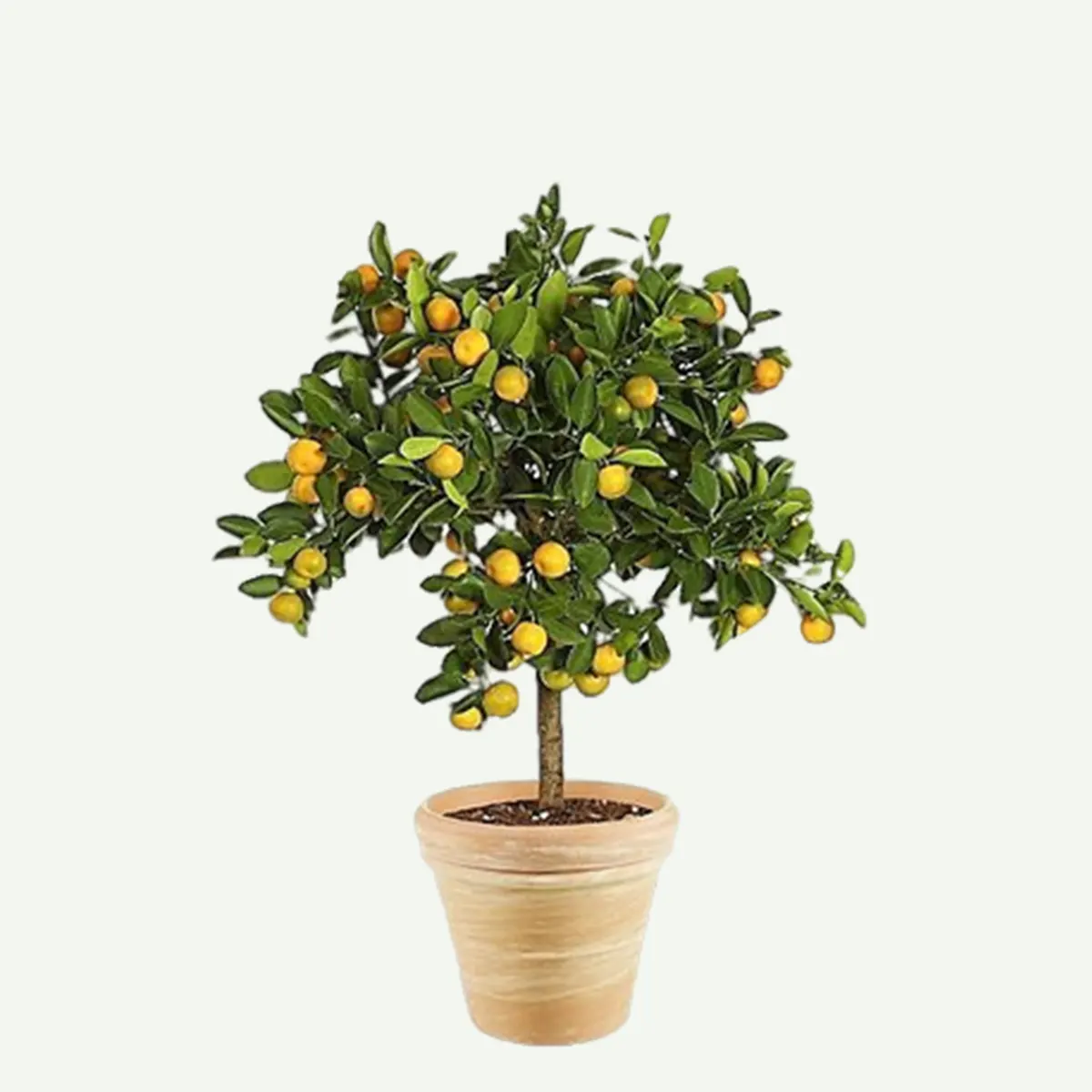Citrus sinensis, commonly known as the Sweet Orange or simply Orange, is a citrus fruit tree belonging to the Rutaceae family. It is one of the most widely cultivated fruit trees in the world, valued for its sweet and juicy fruits, which are consumed fresh, juiced, and used in various culinary applications.
Landscape Use:
Sweet orange trees are widely cultivated for commercial fruit production and are also popular in home gardens and landscapes.
They can be grown as ornamental trees in gardens, parks, and along streets, where their glossy leaves and fragrant flowers add beauty and fragrance to the surroundings.
Sweet oranges can be planted in containers for those with limited space or in regions with colder climates, allowing for easier protection during winter.
Special Considerations:
Citrus trees, including Citrus sinensis, can be susceptible to certain pests and diseases, so regular monitoring and appropriate care are important.
Pruning may be necessary to maintain the tree’s shape, improve air circulation, and remove dead or diseased branches.
Overall, Citrus sinensis (Sweet Orange) is a beloved and versatile fruit tree, cherished for its delicious and refreshing fruits, fragrant flowers, and attractive evergreen foliage. Whether grown for commercial purposes or in home gardens, sweet oranges continue to be a favorite fruit worldwide, offering a delightful taste of sunshine and a range of culinary possibilities.
Here’s an overview of Citrus sinensis:
Plant Characteristics:
Leaves: The leaves of Citrus sinensis are glossy, evergreen, and lance-shaped with a slightly wavy edge. They emit a pleasant citrus aroma when crushed.
Flowers: The tree produces fragrant, white flowers with five petals, which have a sweet scent and can appear individually or in small clusters.
Fruit: The fruit of Citrus sinensis is a spherical or slightly oval berry known as an orange. It typically has a bright orange to orange-red color when ripe, although some varieties may have green or yellow hues in their unripe stage. The flesh is sweet, juicy, and divided into segments containing seeds or seedless, depending on the variety.
Cultural Requirements:
Light: Citrus sinensis thrives in full sunlight. It requires several hours of direct sunlight each day to produce high-quality fruits.
Temperature: Sweet oranges are well-adapted to subtropical and tropical climates but can be grown in certain temperate regions with mild winters and warm summers.
Watering: Regular watering is essential to keep the soil consistently moist but not waterlogged. Drip irrigation is often recommended to prevent water from sitting on the trunk, which can lead to rot.
Soil: Well-draining, sandy-loam soil with a slightly acidic to neutral pH is ideal for Citrus sinensis.
Fertilization: Regular fertilization with a balanced fertilizer designed for citrus trees can promote healthy growth and fruit production.






Reviews
There are no reviews yet.